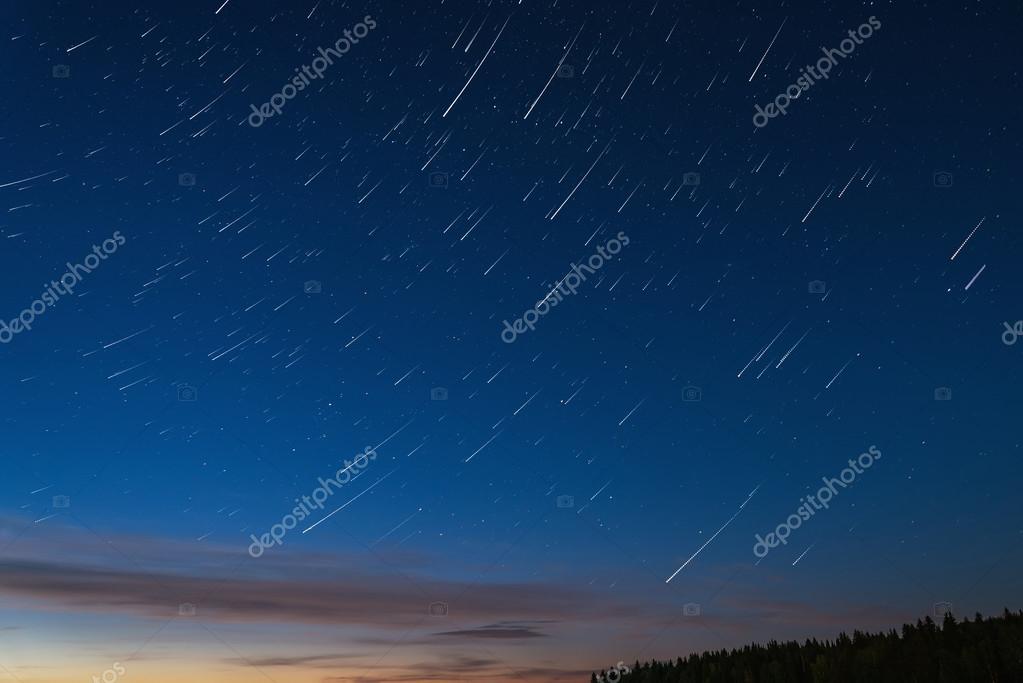Star Tracks: A Comprehensive Guide To The Ultimate Celestial Journey
Star tracks, also known as star trails, are a fascinating phenomenon that has captivated the imagination of astronomers, photographers, and space enthusiasts alike. These mesmerizing patterns created by the Earth's rotation provide a breathtaking view of the night sky. Whether you're an amateur astronomer or a professional photographer, understanding star tracks can enhance your appreciation of the universe's beauty and complexity.
For centuries, humans have looked up at the night sky in awe, wondering about the mysteries of the stars. The concept of star tracks offers a unique perspective on how celestial bodies move across the heavens. By observing these trails, we gain insight into the Earth's rotation and the vastness of the cosmos.
In this article, we will delve into the world of star tracks, exploring their significance, how they are formed, and how you can capture them through photography. Whether you're a beginner or an expert, this guide will equip you with the knowledge and tools to appreciate and document this celestial phenomenon.
Read also:Veet Vs Nair Reviews Which Hair Removal Cream Is Right For You
Table of Contents
- What Are Star Tracks?
- History of Star Tracks
- The Science Behind Star Tracks
- Types of Star Tracks
- Tools for Observing Star Tracks
- Capturing Star Tracks: Photography Techniques
- Best Locations for Observing Star Tracks
- Tips for Beginners
- Famous Star Tracks Photographers
- The Future of Star Tracks
What Are Star Tracks?
Star tracks refer to the streaks or trails left by stars as they appear to move across the night sky. This phenomenon occurs due to the Earth's rotation, which causes the stars to trace circular paths around the celestial poles. The longer the exposure time in photography, the more pronounced these trails become, creating stunning visual effects.
Understanding star tracks is essential for anyone interested in astronomy or astrophotography. These trails not only reveal the movement of celestial bodies but also highlight the beauty of the night sky.
According to NASA, star tracks provide valuable information about the Earth's rotation and the position of stars in the sky. This knowledge has been used for centuries in navigation and timekeeping.
History of Star Tracks
Early Observations
Humans have observed star tracks for thousands of years. Ancient civilizations, such as the Egyptians and Babylonians, used the stars for navigation and timekeeping. They noticed the patterns created by the stars' movement and incorporated this knowledge into their calendars and astronomical instruments.
Modern Discoveries
In the 20th century, advancements in photography allowed scientists to capture star tracks with greater precision. This led to a deeper understanding of the Earth's rotation and the behavior of celestial bodies. Today, astrophotographers use advanced equipment to create stunning images of star tracks, sharing their work with the world.
The Science Behind Star Tracks
The formation of star tracks is a result of the Earth's rotation on its axis. As the Earth spins, the stars appear to move across the sky, creating trails that can be captured through long-exposure photography. The length and direction of these trails depend on the observer's location and the position of the stars in the sky.
Read also:Roberts Field Airport Redmond Your Gateway To Central Oregon
Key factors influencing star tracks include:
- Earth's rotation speed
- Observer's latitude
- Position of celestial poles
According to the International Astronomical Union (IAU), the study of star tracks contributes to our understanding of celestial mechanics and the dynamics of the solar system.
Types of Star Tracks
Circular Tracks
Circular star tracks are formed when the observer is located near the Earth's poles. These tracks form complete circles around the celestial poles, providing a stunning visual display.
Linear Tracks
Linear star tracks occur when the observer is located near the equator. These tracks appear as straight lines across the sky, reflecting the Earth's rotation axis.
Elliptical Tracks
Elliptical star tracks are observed at mid-latitudes, where the trails take on a curved shape due to the angle of the Earth's rotation axis.
Tools for Observing Star Tracks
To observe star tracks, you'll need the right equipment and techniques. Here are some essential tools:
- Telescope: A telescope can help you observe star tracks in greater detail, especially if you're interested in specific celestial objects.
- Camera: A DSLR or mirrorless camera is ideal for capturing star tracks through long-exposure photography.
- Tripod: A sturdy tripod is crucial for keeping your camera stable during long exposures.
- Intervalometer: This device allows you to control the exposure time and interval between shots, ensuring consistent results.
According to the Royal Astronomical Society, using the right equipment can significantly enhance your experience of observing star tracks.
Capturing Star Tracks: Photography Techniques
Long-Exposure Photography
Long-exposure photography is the most common method for capturing star tracks. This technique involves keeping the camera shutter open for an extended period, allowing the stars' movement to be recorded as trails.
Stacking Images
Stacking multiple images can produce even more dramatic star tracks. By combining several shorter exposures, you can create a composite image that highlights the stars' movement over time.
Post-Processing
Post-processing software, such as Adobe Lightroom or Photoshop, can enhance your star track images by adjusting exposure, contrast, and color balance. This step is crucial for achieving professional-quality results.
Best Locations for Observing Star Tracks
Choosing the right location is essential for observing star tracks. Here are some of the best places to experience this celestial phenomenon:
- Dark Sky Reserves: These protected areas offer minimal light pollution, providing an ideal environment for observing star tracks.
- High Altitudes: Observing from higher elevations can reduce atmospheric interference, resulting in clearer views of the night sky.
- Remote Areas: Away from urban centers, remote locations offer unobstructed views of the stars, making them perfect for star track observation.
The International Dark-Sky Association recommends visiting these locations to fully appreciate the beauty of star tracks.
Tips for Beginners
If you're new to observing or photographing star tracks, here are some tips to get you started:
- Start with basic equipment and gradually upgrade as you gain experience.
- Practice your photography techniques in different conditions to improve your skills.
- Join local astronomy clubs or online communities to learn from experienced enthusiasts.
By following these tips, you'll be well on your way to becoming a proficient star track observer and photographer.
Famous Star Tracks Photographers
Many talented photographers have made a name for themselves in the world of astrophotography. Some notable names include:
- Alan Dyer: Known for his stunning images of star tracks and the night sky, Alan Dyer is a respected astrophotographer and author.
- Tom Lowe: Creator of the acclaimed film "Timescapes," Tom Lowe is renowned for his breathtaking star track photography.
- Astrophotographer Tony Hallas: With decades of experience, Tony Hallas has captured some of the most iconic star track images in history.
These photographers inspire countless enthusiasts to explore the world of star tracks and astrophotography.
The Future of Star Tracks
As technology continues to advance, the study and observation of star tracks will only grow more sophisticated. New imaging techniques and equipment will allow scientists and enthusiasts to capture even more detailed and stunning images of this celestial phenomenon.
In addition, the growing interest in space exploration and astronomy ensures that star tracks will remain a popular topic for years to come. Whether through scientific research or artistic expression, star tracks will continue to captivate and inspire people around the world.
Conclusion
In conclusion, star tracks offer a fascinating glimpse into the movement of celestial bodies and the beauty of the night sky. By understanding the science behind star tracks and mastering the techniques for observing and photographing them, you can fully appreciate this incredible phenomenon.
We invite you to explore the world of star tracks further by sharing your experiences, asking questions, or trying out the tips and techniques discussed in this article. Remember, the universe is vast and full of wonders waiting to be discovered. Happy stargazing!


